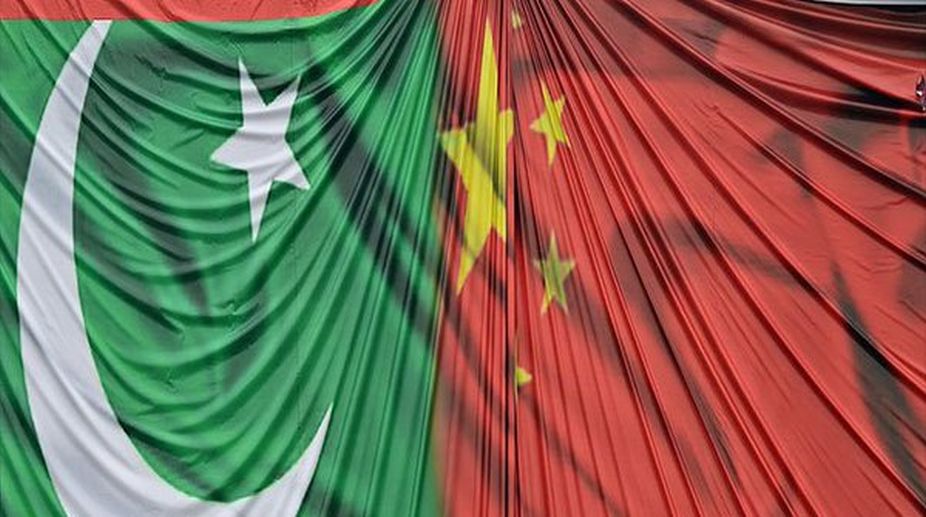Sana Mir and Usain Bolt named ambassadors of ICC T20 WC Qualifier 2024
Former Pakistan skipper Sana Mir and eight-time Olympic gold medallist Usain Bolt have been named as the ambassadors of women’s and men’s ICC T20 World Cup Qualifier 2024.

(Photo: Twitter)
From the time of Pakistan’s independence to the end of the Soviet occupation of Afghanistan in 1989, Pakistan was known for its close ties with the US, which made analysts jokingly refer to the three “As” which dominated Pakistan ~ Allah, Army and America.
The main reason for Pakistan’s proximity to the US was its fear and dislike of India ~ a much larger neighbour which was presumed to have refused to accept the sub-continent’s Partition in 1947 and, therefore, was unwilling to accept Pakistan as a legitimate country.
Hence, Pakistan’s arms agreements with the US in order to boost its defences vis-à-vis India.
Advertisement
The end of the war in Afghanistan and the rise of terrorism in Pakistan led to a rupture with the US.
Earlier, too, the strain in ties between the two countries because of Pakistan’s clandestine nuclear programme had brought China closer to Pakistan, so much so that theirs was described as an all-weather friendship.
However, there may well be a twist in the tale of this camaraderie because, as the respected Pakistani newspaper, Dawn, has said, the Belt-Road Initiative (BRI) “envisages a deep and broad-based penetration of most sectors of Pakistan’s economy as well as its society by Chinese enterprises and culture. Its scope has no precedent in Pakistan’s history”.
Nor is there any precedent in the history of colonialism where a country has spent billions of dollars on building roads, ports, dams and special economic zones, as China is doing, in another country ostensibly for economic development but paving the way for establishing its own hegemony by pouring in capital, labour and technology.
As the Dawn has noted, thousands of acres of agricultural land will be leased to Chinese enterprises for projects relating to seeds, irrigation, fertilizer, processing units for fruits, vegetables, meat and grain along with storage and transport systems.
There will also be a construction of “safe city” surveillance facilities from Peshawar to Karachi with 24- hour recording of roads and markets.
In addition, fibre-optic cables will be put in place not only for the Internet, but also for television programmes which will be engaged in “disseminating Chinese culture”. Two dams will be built in the Gilgit-Baltistan region (which India claims as its own), displacing an estimated 28,000 people and submerging important archaeological sites.
Evidently, there is much more to BRI than the building of a road from Kashgar in Xinjiang in China to the Gwadar port in Baloochistan in Pakistan, especially because China has taken note of the risk posed by the security situation which has been described as the “worst in recent years”.
It is worth asking in this context whether India has been right ~ or wrong ~ in keeping away from the BRI jamboree in Beijing.
Those who want India to be a part of BRI believe that it will gain from the surge in business deals along the China-Pakistan Economic Corridor (CPEC) which the Chinese ambassador in India wanted to rename to please India before his bosses in Beijing shot down the proposal.
But an acceptance of CPEC will mean an acceptance of the fact that the “corridor” passes through territories which India says is under Pakistan’s and China’s illegal occupation.
Can India afford to legitimize such a land grab for the sake of dollars ? What is more, these are areas where there already have been protests against Chinese “imperialism”, as has been reported from Gilgit, Hunza, Skardu and Ghizer, and also from Hambantota port in Sri Lanka which has virtually been taken over by the Chinese because Colombo could not repay the $1.2 billion loan given by Beijing.
Not surprisingly, BRI has been called Chinese debt-trap diplomacy, which is intended to increase Chinese leverage over the debtor nations. India may well prefer, therefore, to wait and watch since the BRI is riddled with unanswered questions.
In all probability, India’s main interest will lie not so much in trade and investment opportunities as in seeing what impact the increasingly large Chinese presence in Pakistan ~ there are already 8,000 Chinese personnel working in the 210 ongoing projects in the country ~ will have on the security situation, especially on the various terrorist networks such as Lashkar-e-Taiba (LeT), Jaish-e-Mohammed ( JeM), Tehreek-e-Taliban ( TeT), the Haqqani group, the Al Qaida and others. Some of these outfits, such as the LeT, are nurtured by the Pakistan army and the ISI for targeting India while the JeM will have a soft corner for China because it refuses to allow the UN to brand its leader, Masood Azhar, as a terrorist.
But there are others like the TeT which specifically targets Pakistan for not being Islamic enough. There is little doubt that these will not like the influx of Chinese troops, ostensibly for the sake of protecting the CPEC, but, in effect, strengthening Pakistan’s security apparatus, thereby hampering the terrorist operations. For these terrorist groups, there is also the question of “culture” via the television programmes controlled by Beijing.
For the jihadis, the dominance of their country by the atheist Chinese will be detrimental to their ideal of imposing the Shariat or the Islamic religious, social and behavioural doctrine on Pakistan. The BRI, therefore, can open a Pandora’s box.
The writer is former Assistant Editor, The Statesman
Advertisement